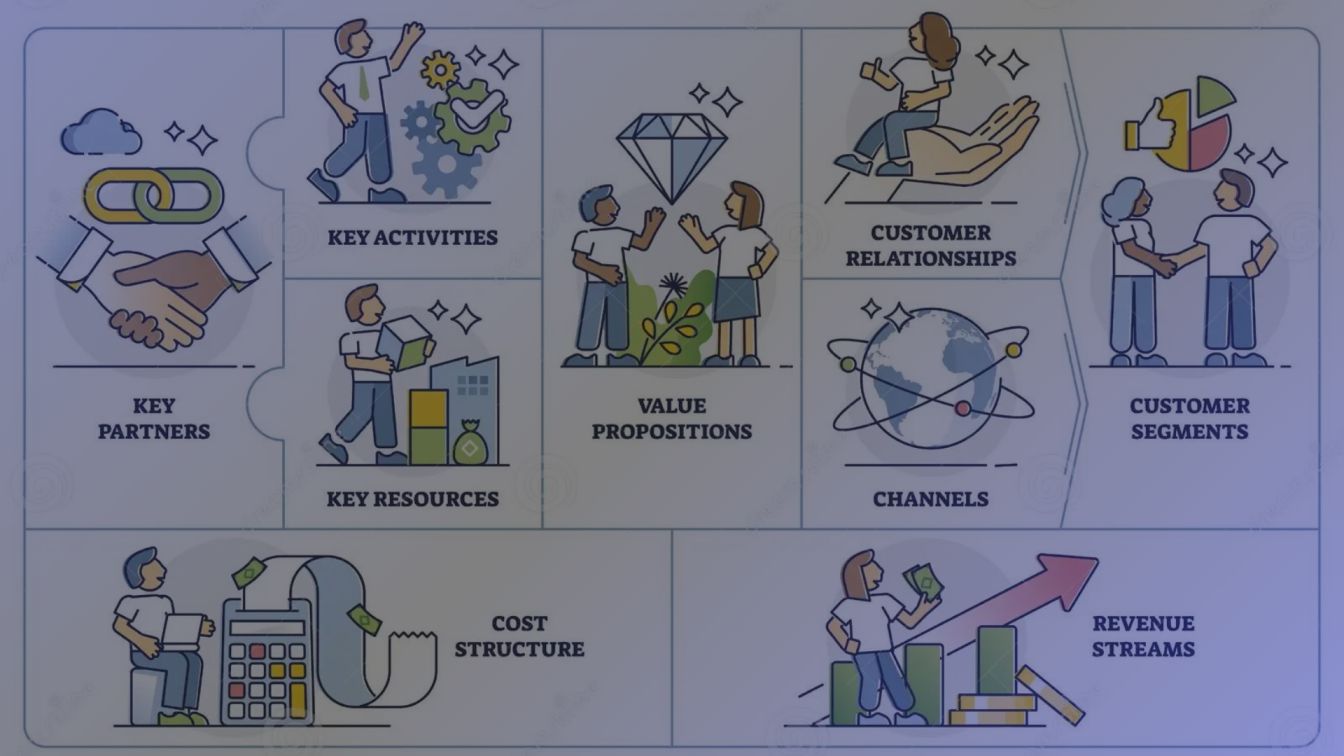iscover how the Business Model Canvas transforms group brainstorming into groundbreaking business strategies, as exemplified by Microsoft’s leap into cloud-based services. Dive into our guide for harnessing collective genius and reshaping your business landscape.
- Customer Segments: Who are your customers?
- Value PropositionsWhat value do you provide to your customers?
- Channels:How do you reach your customers?
- Customer Relationships:What relationship do you have with your customers?
- Revenue Streams:How do you generate revenue?
- Key Resources:What resources do you need to operate your business?
- Key Activities:What activities do you need to perform to deliver your value propositions?
- Key Partnerships:Who are your key partners?
- Cost Structure:What are the costs of operating your business?

The Business Model Canvas can be used in a variety of ways, but one of the most effective ways to use it is in a collaborative setting. When a group of people come together to brainstorm using the Business Model Canvas, they can generate a wider range of ideas and challenge each other's assumptions. This can lead to more creative and innovative business models.
How Microsoft Used the Collaborative Canvas :
Microsoft is a company that has a long history of innovation. One of the ways that Microsoft has fostered innovation
is by using the Business Model Canvas in a collaborative setting.
In the early 2000s, Microsoft was facing some challenges. The company's core business of selling software
licenses was under threat from new cloud-based competitors. Microsoft needed to find a way to innovate and grow.
To address these challenges, Microsoft used the Business Model Canvas to brainstorm new business models. The company brought together a group of employees from different departments, including marketing, sales, and engineering.
The group used the Business Model Canvas to identify new customer segments, value propositions, channels, and revenue streams.

As a result of this brainstorming session, Microsoft came up with a number of new business ideas, including the idea of
selling subscriptions to software instead of one-time licenses. This idea led to the
development of Microsoft Office 365, which is now a major source of revenue for the company.
The example of Microsoft shows how the Business Model Canvas can be used in a collaborative setting to spark creative
ideas and foster innovation. By bringing together a group of people with different perspectives, businesses can develop
new and innovative business models that can help them achieve their goals.
How to Use the Collaborative Canvas :
There are several ways to use the Business Model Canvas in a collaborative setting. Here are a few tips:
- 01 - Get a diverse group of people together. The more diverse the group, the more creative the ideas will be.
- 02 - Set a clear goal for the brainstorming session. What are you hoping to achieve?
- 03 - Start by filling out the canvas as a group. This will help everyone to get on the same page.
- 04 - Encourage wild ideas. No idea is too crazy at this stage.
- 05 - Build on each other's ideas. Don't be afraid to combine different ideas to create something new.
- 06 - Use visuals. Use sticky notes, markers, and other visuals to help capture your ideas.
Additional Benefits of Using the Collaborative Canvas :
In addition to sparking creative ideas and fostering innovation, using the Business Model Canvas in a collaborative setting can also have some other benefits, including:
- Improved communication and collaboration: When a group of people work together to fill out the Business Model Canvas, they are forced to communicate and collaborate. This can help to improve teamwork and break down silos between different departments.
- A shared understanding of the business: The Business Model Canvas can help to create a shared understanding of the business among all team members. This can help make strategic decisions and ensure that everyone is on the same page.
- A more agile business: The Business Model Canvas can help businesses to become more agile and adaptable. By using the Business Model Canvas, businesses can easily test and iterate on their business models.
In the ever-evolving landscape of business, the Business Model Canvas stands as a beacon of innovation, guiding enterprises
toward uncharted territories of growth and success. Our journey through the Collaborative
Canvas has illuminated the path to harnessing collective wisdom, where diverse minds converge to sculpt the future of commerce.
As we’ve seen with industry giants like Microsoft, the transformative power of collaborative brainstorming is not just theoretical,
it’s a proven catalyst for monumental shifts in business paradigms.
Are you ready to revolutionize your business model?
Now, it’s your turn to embark on this voyage of discovery.

